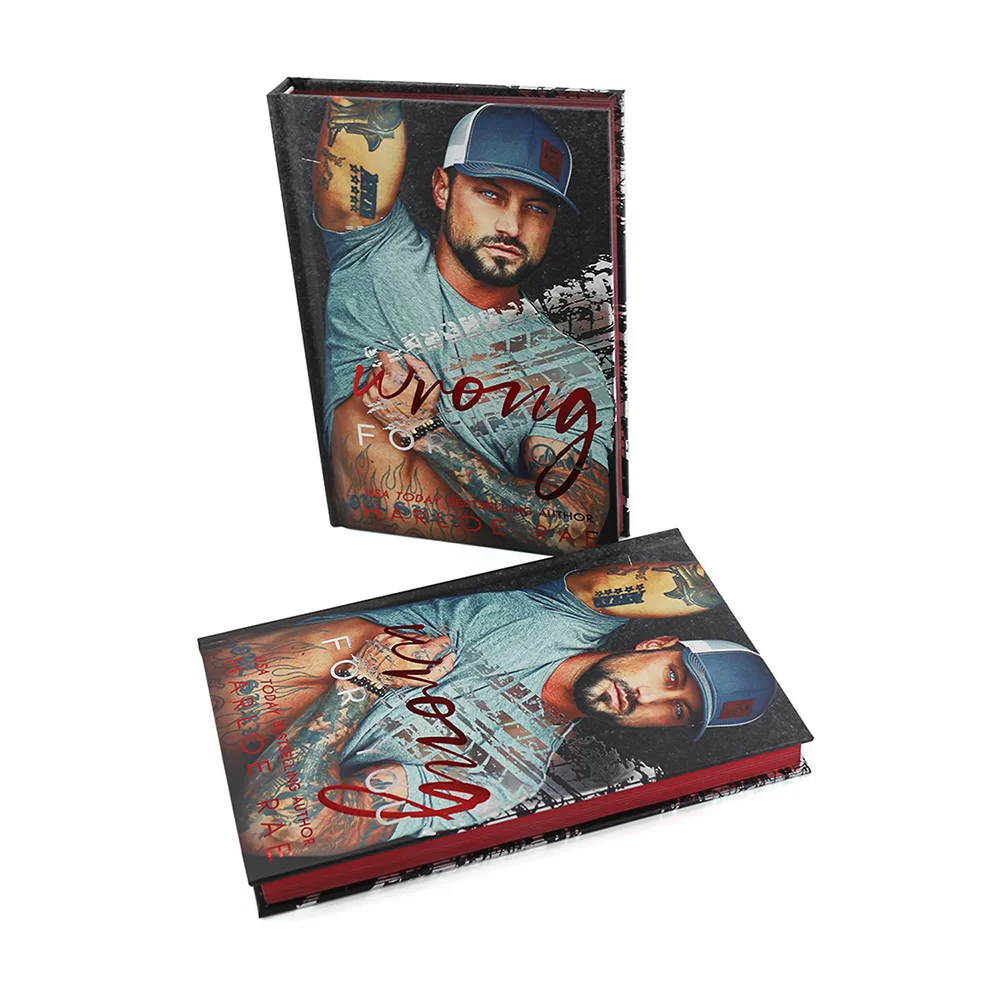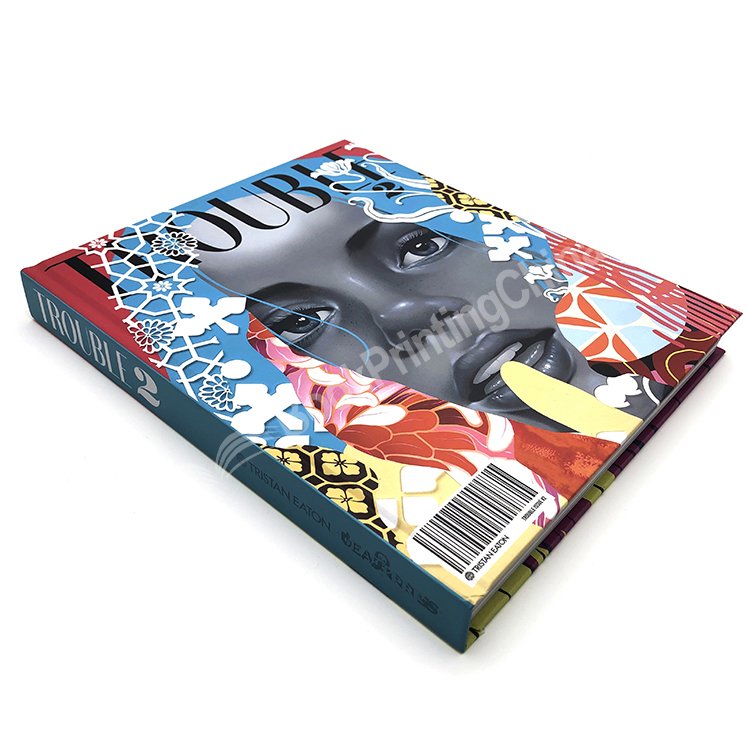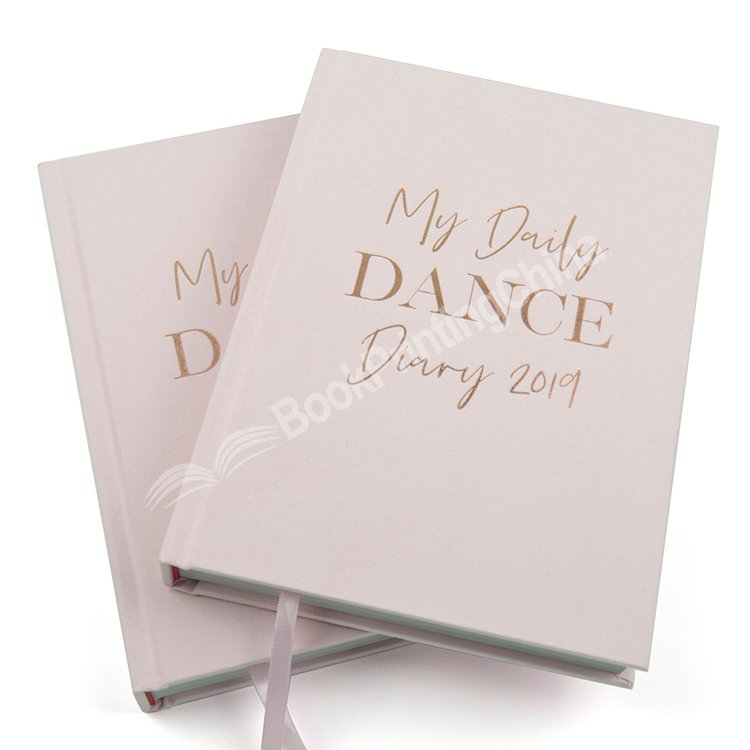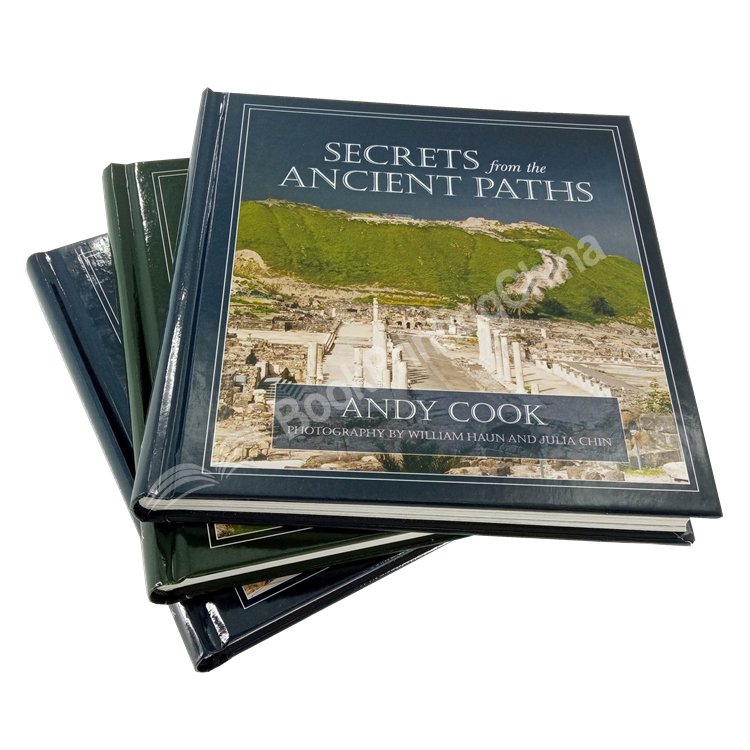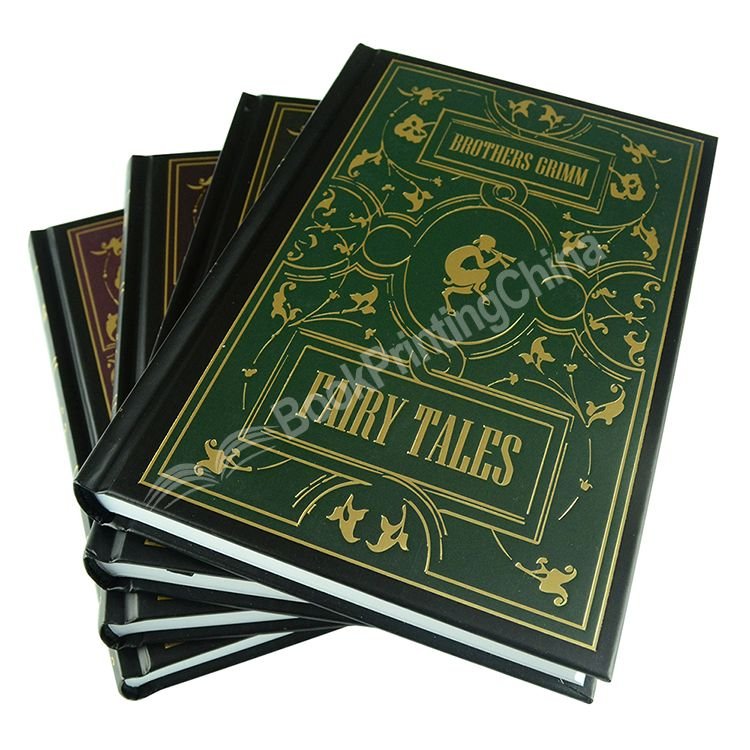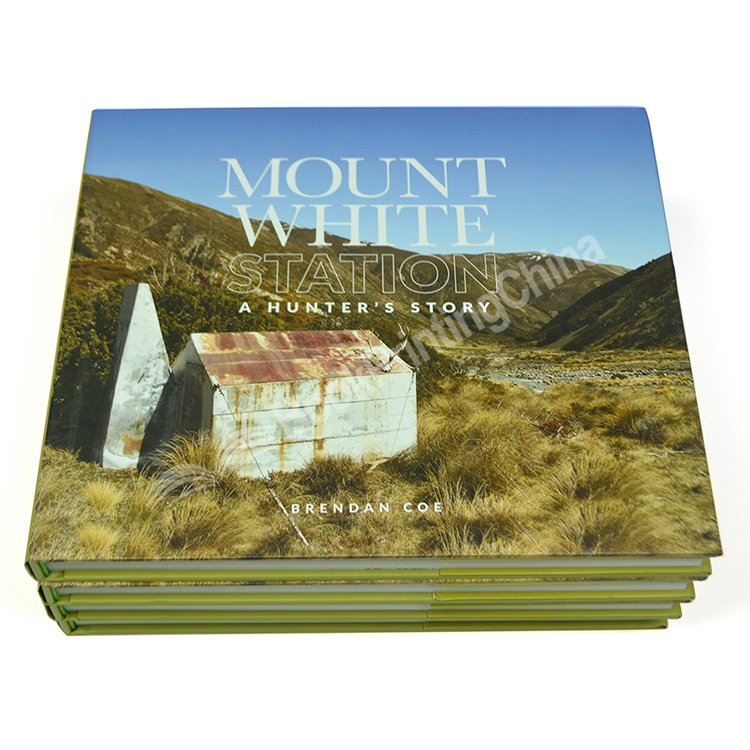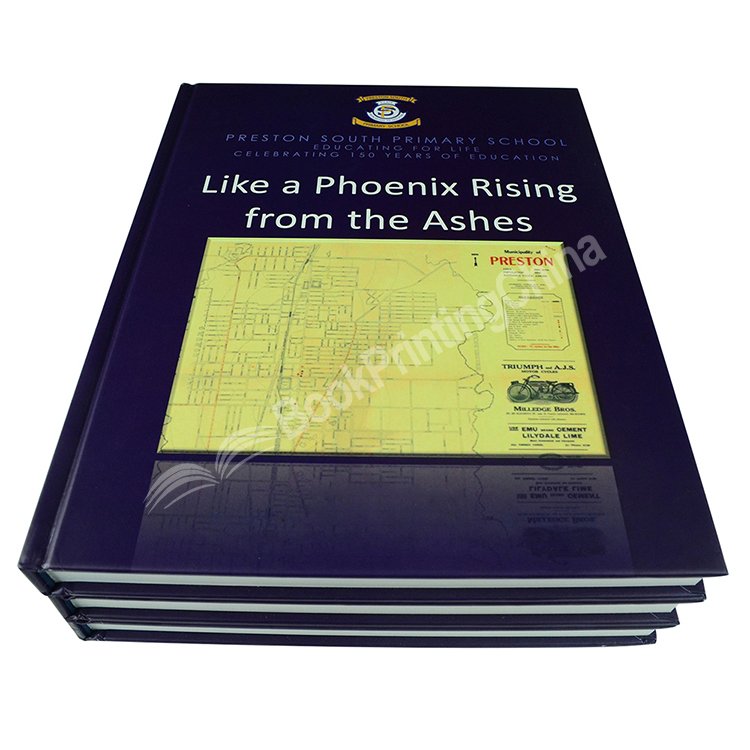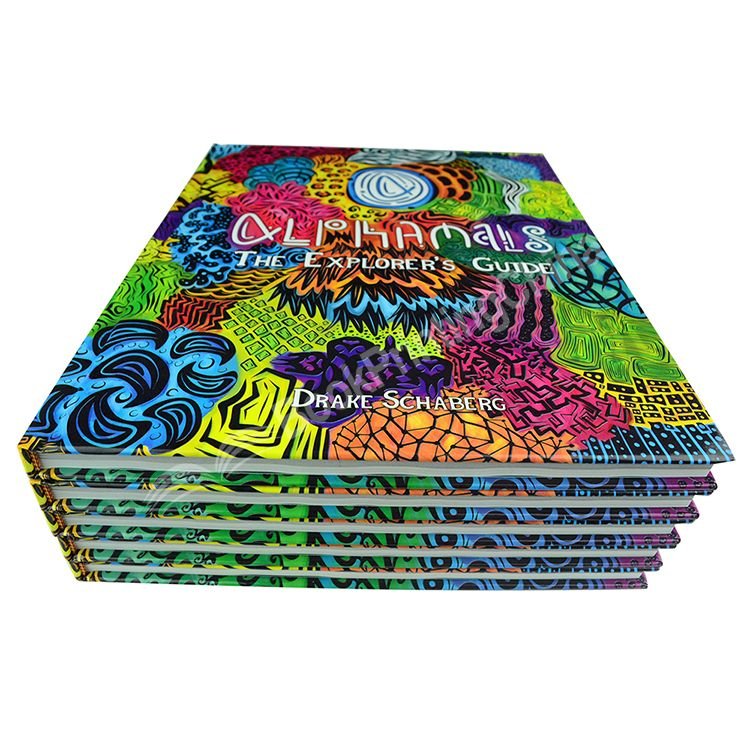Contact Us
(888) 595-0219
Liberty Plaza 165 Broadway Lower Manhattan, 7th Floor, NY, 10006, USA
Hardcover Book Printing
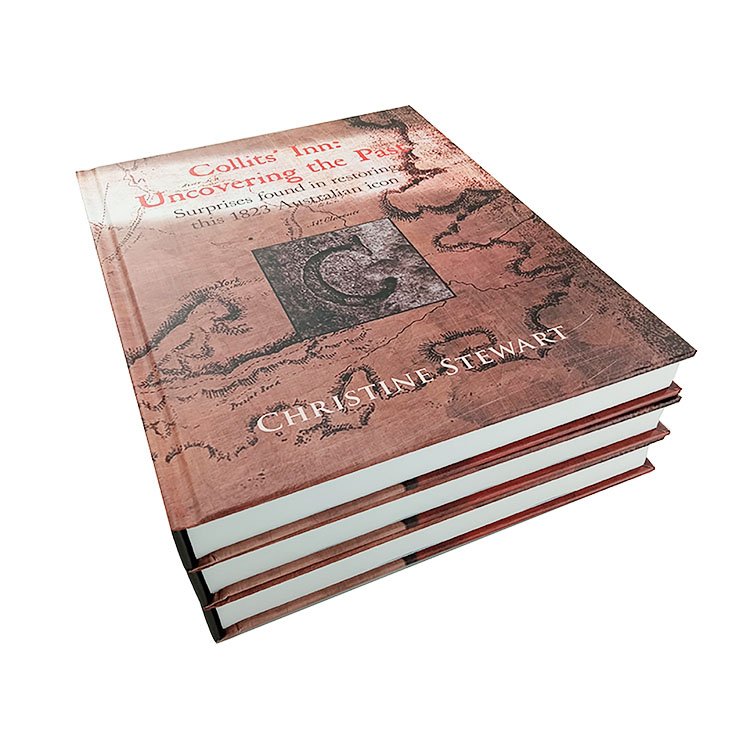 Professional Quality Case Bound Book Printing
Professional Quality Case Bound Book Printing
What is a hardcover book? Hardcover books are known by several names: case bound, hardback, sewn hardcover binding and bond book. Our hardcover book is binding with glued and sewn, which can be opened flat and used for longer. We often custom hardcover book with round spine or square spine. As an offset printing factory who has over 20 years of printing experience, we are a good choice for you.
- ☑ Competitive price
- ☑ Eco-friendly ink and paper
- ☑ A wide range of customized options
- ☑ State-of-art offset printing
- ☑ Fast delivery
- ☑ Truly customer-centric customer service
Why do people choose their book as a hardcover book? The main reason I think is it looks elegant and durable. You can imagine a writer who has worked for years to write a book and wants to print it as a masterpiece, making it a collector’s item for every reader.
Hardcover books are often the preferred choice for those looking to create something special. Whether you're printing a family history book, a novel, or just something to share with friends and family. Hardcover books can make a lasting impression.
Our company can help everyone realize this dream, no matter how complicated your job it is, our factory can arrange in perfect quality, as our machines here are one entire set advanced for book printing, and we own an experienced team.
Paper Stock
When it comes to hardcover book printing, paper stock is one of the most important elements. Different types of paper can affect both the look and feel of your book, from the cover to the pages inside. Choosing the right type of paper for each part of your book is essential to achieving professional results.
Cover material

For covers, glossy stocks with high-gloss laminates are popular for their luxurious feel and superior look. For a more subtle finish, matte papers offer a satin sheen that won't overpower other design elements on your cover or dust jacket.
For those looking for a more elegant and luxurious option, we also offer cloth materials for custom your book cover. Cloth cover are often preferred for art books or photo books, etc, as they add a touch of sophistication to the overall presentation. Our cloth materials come in a variety of colors and textures, allowing you to choose the perfect option to complement your book’s design.
If you’re seeking the ultimate in luxury and durability, leather covers are the perfect choice. Made from premium quality faux leather or leather, these book covers exude elegance and sophistication. Leather covers are not only visually striking but also offer superior protection for your books.
Interior paper

Text pages in hardcover books typically use thinner paper than covers. Ranging from 54 lb text weight –135 lb text weight . Thinner paper is preferred so that readers can easily turn pages without adding too much bulk to the spine. An important consideration when you're dealing with a large number of pages in a single book!
Dust jackets are commonly printed on glossy/matte coated stocks. Although uncoated stock can also be used for a more subtle effect if desired. The thickness will depend largely on how much protection you need. Thicker stocks provide more protection against wear and tear during shipping or handling. But may not lay as flat when opened as thinner stocks do.
| Hard Cover Paper | Slipcase |
|
|
|
|
|
|
|
|
| Interior text paper | End sheet paper |
|
|
|
|
|
|
|
|
|
|
|
|
|
|
|
|
|
|
Dust Jacket
- 128gsm/47 lb coated cover paper
- 157gsm 58 lb coated cover paper
- 200gsm/74 lb coated cover paper
Hardcover Book Size
The standard size of a hardcover book is typically 5.5" x 8.5", 6" x 9", 8.5'' x 8.5'', 10 x 10’’, A4, A5. These sizes are popular for paperback and hardback books alike. As they provide a convenient balance between cost-effectiveness and readability. Oversized books can also be printed with larger dimensions, such as 11" x 8.5",8.5 x 11’’ .

The number of pages in a book will depend on the detail of the content, but some standard page counts have become popular over time. For example, 16-32 pages is often used for children's picture books. For longer works such as novels and textbooks, 48 to 96 pages are common sizes, while over 100 pages is often used for large fiction books.
When designing artwork for a custom hardcover book printing project. It's important to take into account the chosen size and page count when considering fonts and images. If the text needs to be readable at smaller sizes then it's important to use larger typefaces than would normally be recommended. To allow readers comfortable reading experiences across all device types.
Binding
Binding is an important aspect of any hardcover book printing project. It determines the strength and durability of the book as well as its overall quality. Depending on the type of book you are printing, different binding options may be preferable. But print hardcover books usually use case binding. Hardcover usually includes square spine hardcover and round spine hardcover.

Case binding
Case binding (also known as 'hardcover binding') is widely used in the hardcover books printing industry. Due to its superior strength and durability compared to other types of bindings. It involves sewing pages into folded sections called signatures which are then gluing into a cover made from heavier paperboard or cardstock with spine rounding or squaring. Forming a strong casing around the pages that helps protect them from damage.
To better protect or display your hardcover book, we also provide other custom options, like dust jacket, slipcase, box and so on.
Dust jackets
Dust jackets, also known as book jackets or dust covers, are detachable paper covers wrapped around hardcover books. They not only serve as a protective layer for the book but also play a pivotal role in capturing the reader's attention with their captivating designs and informative content.
Advantage of book with dust jacket
Aesthetic appeal-Dust jackets are designed to entice readers and convey the essence of the book. They often feature eye-catching artwork, typography, and images that reflect the story, genre, or overall theme. By incorporating vibrant colors, unique designs, and engaging visuals, dust jackets add appeal to hardcover books, making them irresistible to potential readers.
Book information-Beyond their aesthetic value, dust jackets function as a source of important book information. They typically include the author's name, book title, publisher, and a concise blurb that offers a glimpse into the story. Some dust jackets go a step further and feature author bios, endorsements, or even critical acclaim to enhance the book's credibility and attract readers.
Durability and protection-One of the primary purposes of a dust jacket is to safeguard the hardcover book beneath it. While hardcovers provide inherent sturdiness, dust jackets prevent direct contact with dust, dirt, and other elements that could potentially mar the book's cover. They act as a barrier, shielding the book from wear and tear, ensuring it remains in pristine condition for years to come.
Custom book slipcases
While dust jackets serve as the initial safeguard, custom book slipcases take book protection to another level. Slipcases are sturdy, custom-made boxes that encase the entire hardcover book. Providing superior protection against dust, sunlight, moisture, and accidental damage.
Advantage of book with slipcase
Bespoke design-Custom book slipcases are tailor-made, specifically crafted to fit the dimensions of the hardcover book they enclose. Made from high-quality materials such as cloth, leather, or even beautifully designed paper. Slipcases exude luxury, elegance, and sophistication. The custom design allows slipcases to complement the aesthetics of the book or even become a standalone work of art.
Enhanced preservation-In addition to aesthetics, the primary purpose of a slipcase is to ensure the long-lasting preservation of the book. By providing an additional layer of protection, slipcases safeguard the book from external factors that can lead to fading, discoloration, or damage. The rigid structure of the slipcase also prevents bending or warping of the book's cover, maintaining its structural integrity for generations to come.
Collector's item-Custom book slipcases are often highly coveted by book collectors. As they elevate the overall value and desirability of a hardcover edition. Slipcases can become a symbol of rarity and exclusivity, making a book more appealing to avid collectors who appreciate both the content and the packaging.
Finish Options
Post-press is an important part in printing hardcover books. Different post-press, the final printed effect will be different. Here listed some popular post-press techniques used in case bound book printing.
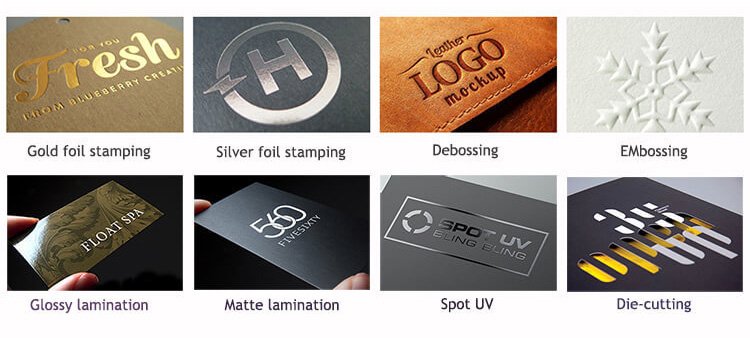
Lamination provides extra protection by coating the cover with plastic film. Lamination is the most popular and cost-effective post-press for custom hardcover books.
Foil stamping and embossing are processes used to add metallic or raised effects to certain parts of the cover design, such as logos or titles.
Die-cutting is a process where intricate and precise shapes are cut into the cover material to create unique patterns and shapes that add texture and durability to the book.
Spot UV is a technique where a thin layer of ultra-violet varnish is applied to specific areas of the cover, giving it a glossy sheen that catches the light.
Spot varnishing is similar to spot UV, but instead of ultra-violet varnish, it uses regular gloss or matt varnish for a subtle effect.
When using these techniques on your hardcover book, it's important to consider how they fit into your overall design aesthetic. For example, die-cutting can be used for small details such as cutting out part of a logo or creating intricate patterns. Spot UV can be used to highlight certain elements on your cover. Foil stamping and embossing can be used for larger text elements, such as logo, tittle. Lamination provides an extra layer of protection against wear and tear.
More options, please check out "surface options"
Artwork Tips
Designing artwork for hardcover books can be a daunting task, but it doesn't have to be. With the right tips and tricks, you can create artwork that will produce beautiful results when printed.
The most important thing to consider is the file format you use for your artwork. PDFs are the most common file type used in book printing because they are stable, reliable, and versatile. It's best to use vector PDFs whenever possible. Since they are resolution-independent and can be scaled up without any blurring or pixelation.
High resolution images are also a must for successful hardbound book printing projects. When using images, make sure they have at least 300 dpi (dots per inch) of resolution or higher so that no details are lost when printed on press. If possible, it's also a good idea to save them as CMYK instead of RGB for better color accuracy.
When setting bleed lines and trim lines, it's important to leave enough space around each element. So that when printed, there won't be any unexpected cropping or other surprises. For hardcover books specifically, a minimum 3 mm(0.125 inch) bleed is recommended.
When custom print hardcover book, the cover must larger than the pages and needs a minimum 23 mm bleed. So as to allow for wrapping the board during production. And consider the spine width when designing dust jackets.
Finally, when designing the cover itself, remember to include legible fonts in larger sizes if needed and use light colors against dark backgrounds or vice versa if possible. So that text stands out more clearly on press. Also keep in mind where any logos or additional elements will be placed. There should always be enough space between them so they don't look cluttered together once printed on the cover of your book!
Besides hardcover book we have other varied array of printing and binding services for you to choose. You can choose from options like perfect bound book printing, wire o book printing, saddle stitched book printing, etc.



